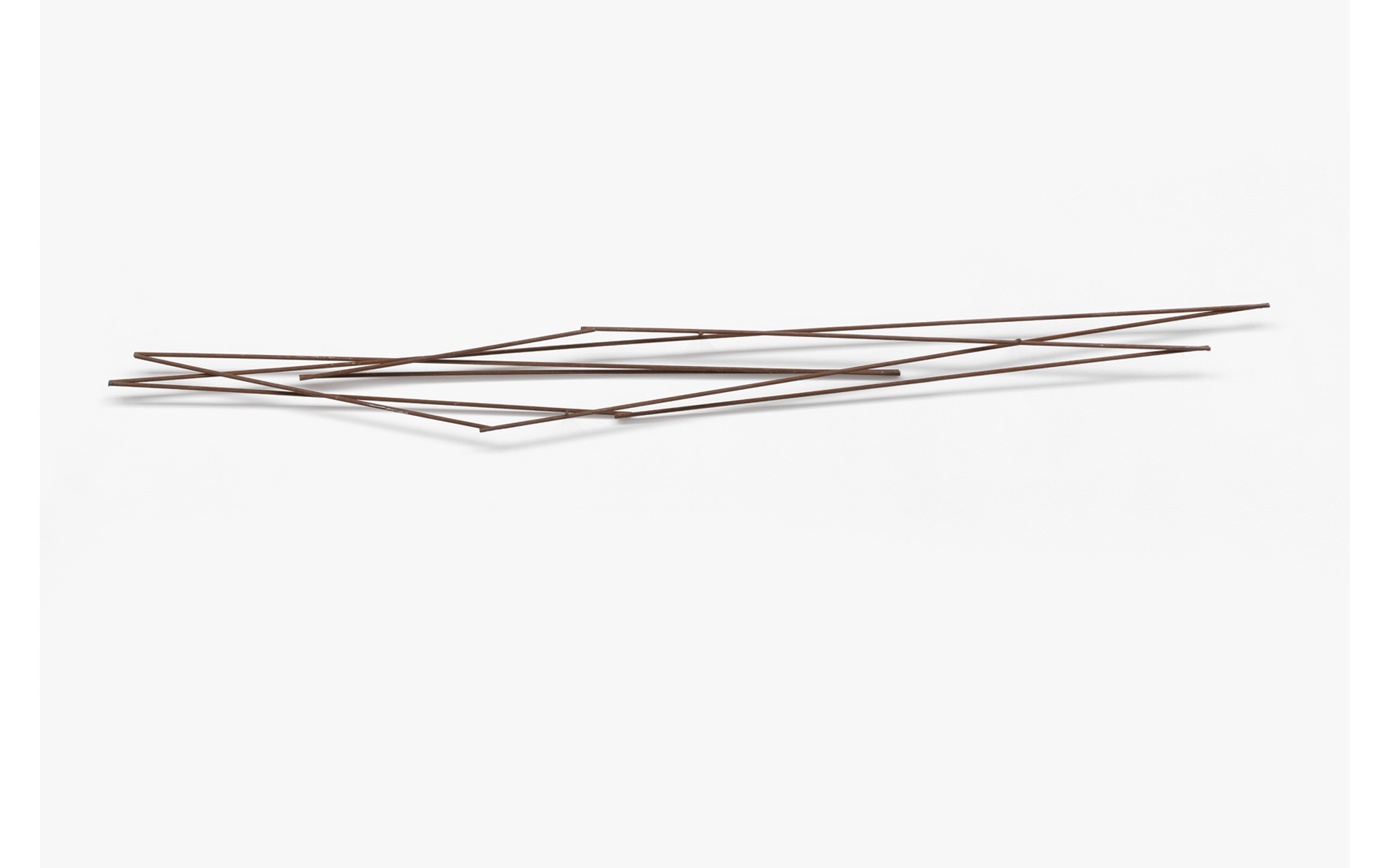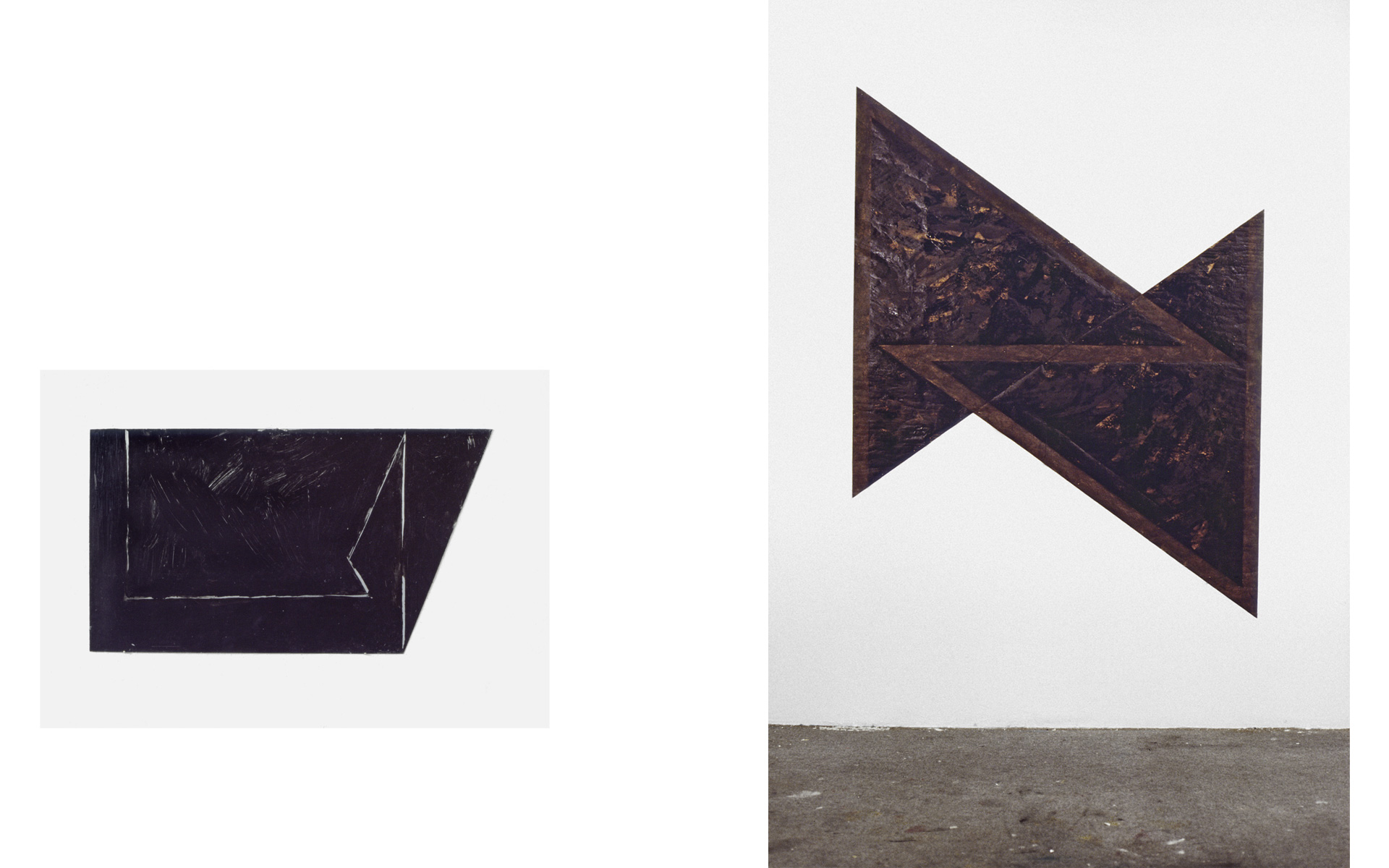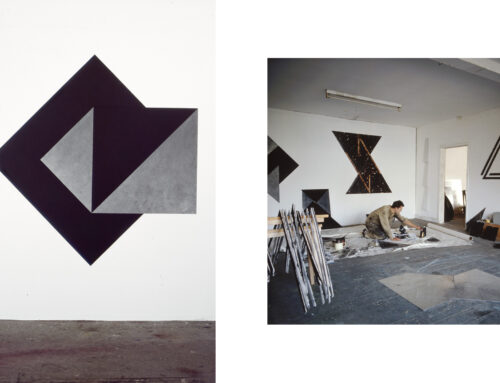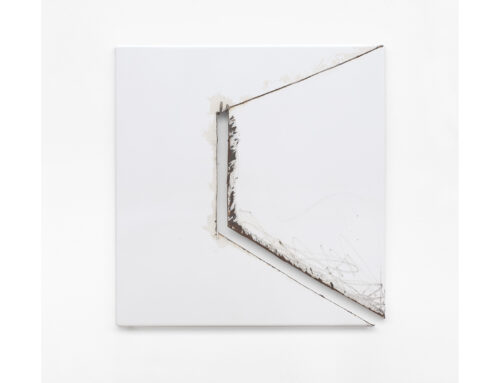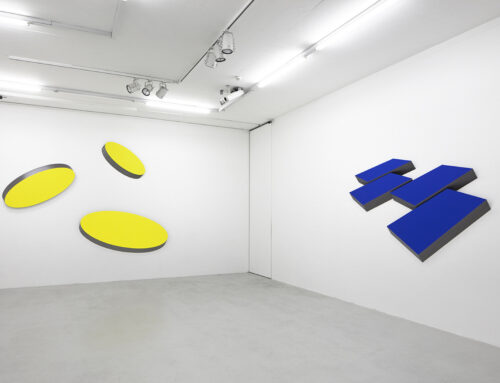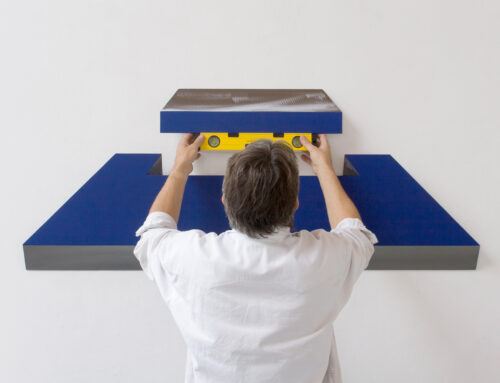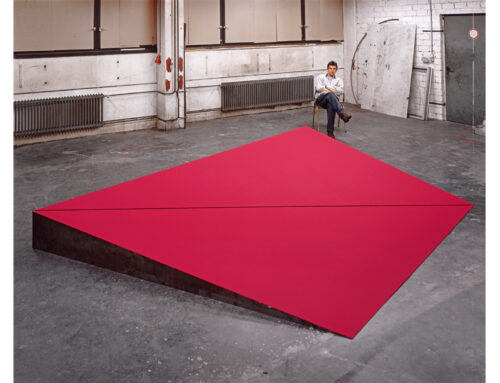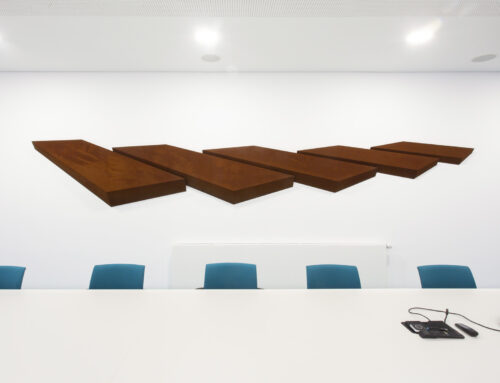The joining and drifting apart of a form
06
___ Looking at Wolfram Ullrich’s production from the late 1980s, one finds works that suggest astonishing links to the rust works. At first glance, the colours and the approach to the edges make one think it is the same material and principle of construction. This impression is deceptive in both respects.
___ Admittedly, the materials used – fibreboards and plywood – are “base” like rusted metal. Yet here he does not proceed according to the either/or principle; both types of wood are employed at once in the joining. It is precisely in this detail that the crucial difference from the earlier works lies. In the rust works, the edges were treated with oil and so are optically distinct from the rest of the form. There is the illusion of a separation that does not exist. The edge in the wood works, by contrast, results from materials separated from one another, which cause this difference to be clearly recognizable in their entirely different surface structures. What results in the rust art from an optical drifting apart of the same material is achieved in the wood art by putting together different ones. And this joining and simultaneous drifting apart refers not only to the materiality but also and especially to the forms. What one sees here are not cuts. They are splits.
___
Text: Dr. Theres Rohde



